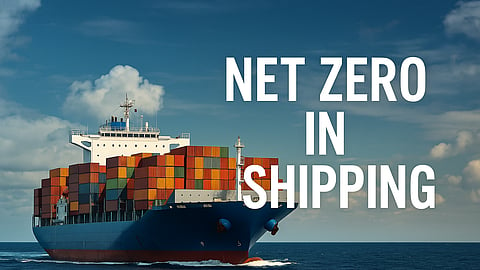Net Zero in Shipping: Feasible Goal or Distant Dream?
The shipping industry is the backbone of global trade, transporting nearly 90% of world goods. Yet, it is also a significant contributor to greenhouse gas (GHG) emissions, accounting for roughly 3% of global CO₂ output—comparable to the emissions of a major industrialized nation.
With the global push toward sustainability, the International Maritime Organization (IMO) has set ambitious targets to reach net-zero emissions by around 2050. But is this goal truly feasible, and if so, how can it be achieved?
The Feasibility Challenge
Achieving net zero in shipping faces unique hurdles. Unlike road transport, which can shift to electric mobility relatively quickly, deep-sea shipping demands high energy density fuels for weeks-long voyages.
The New Wave: How Technology and Sustainability are Transforming Container Shipping
Current low-carbon technologies are either costly, underdeveloped, or lack global infrastructure. Moreover, the shipping fleet has a long replacement cycle—ships can operate for 20–30 years—meaning any transition will be gradual.
Key challenges include:
High cost of alternative fuels and retrofitting ships.
Insufficient global bunkering infrastructure for green fuels.
Technological uncertainty in scaling up viable propulsion systems.
Regulatory fragmentation across countries and shipping routes.
Pathways to Net Zero
Despite these challenges, several pathways offer promise:
Alternative Fuels
Green Ammonia and Green Methanol: Potential zero-carbon options but require safety protocols and production scale-up.
Hydrogen: High potential but faces storage and cost challenges.
Biofuels: Can be used in existing engines but may face sustainability concerns.
Energy Efficiency
Hull design optimization, air lubrication systems, and advanced propellers can reduce fuel consumption by 10–20%.
Slow steaming—reducing ship speed—cuts emissions but increases voyage times.
Wind and Solar Assistance
Modern rotor sails, kite systems, and onboard solar panels can supplement propulsion.
Electrification for Short Routes
Battery-powered ships are practical for ferries and coastal services where charging infrastructure exists.
Digital Optimization
AI-driven route planning can minimize fuel use by avoiding adverse weather and optimizing currents.
Making It Possible
Reaching net zero will require global collaboration, massive investment, and strong regulatory push. The IMO’s carbon pricing proposals, subsidies for green fuel production, and public–private partnerships are vital.
Shipping companies must also commit to retrofitting existing fleets, while ports must invest in bunkering infrastructure for green fuels.
Most importantly, first movers—companies willing to adopt new technologies early—can create market momentum, driving down costs over time.
Verdict: Feasible with Urgency
Net zero in shipping by 2050 is technically possible but not inevitable. Without bold policy action, coordinated global standards, and significant investment in R&D, the goal risks slipping out of reach.
The technology roadmap exists; what remains is the will to set sail on the course to a truly sustainable maritime industry.
Read More: AI Frenzy is Challenging Sustainability Goals in the Shipping Industry


